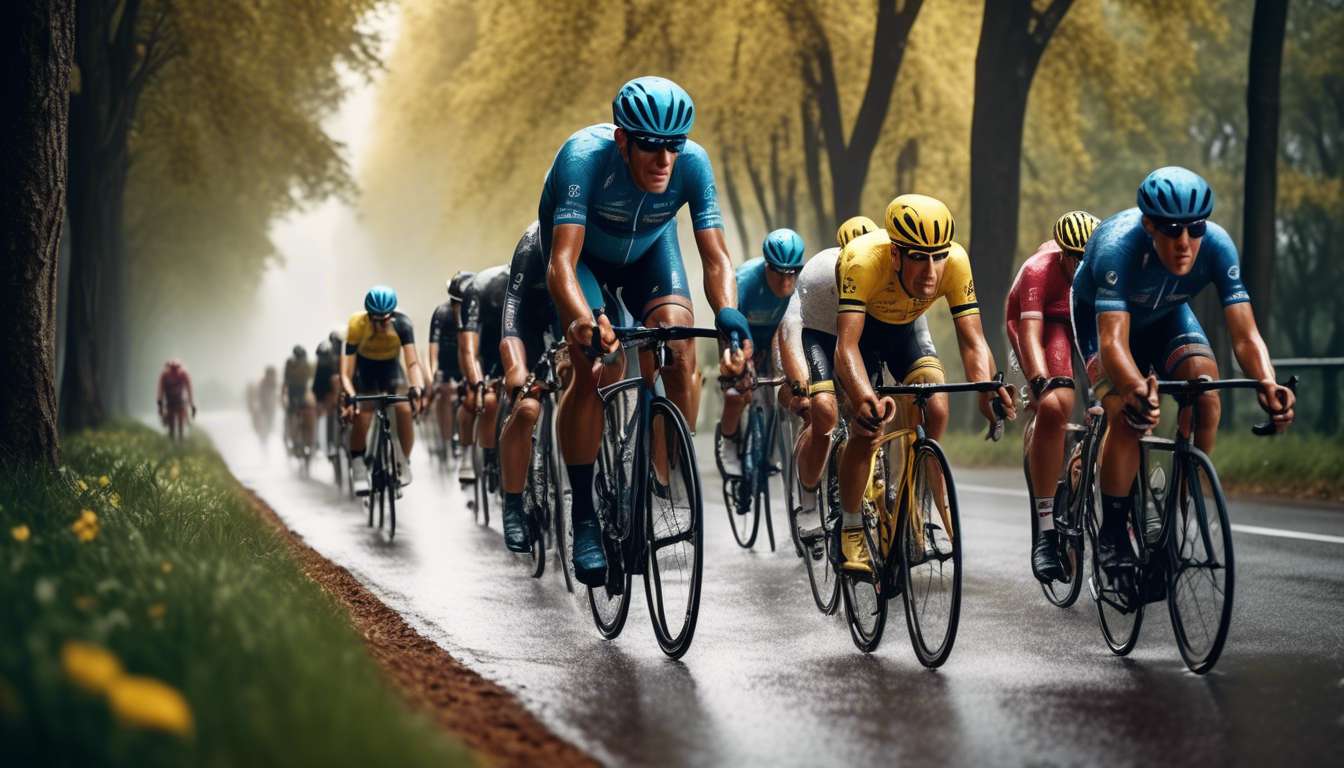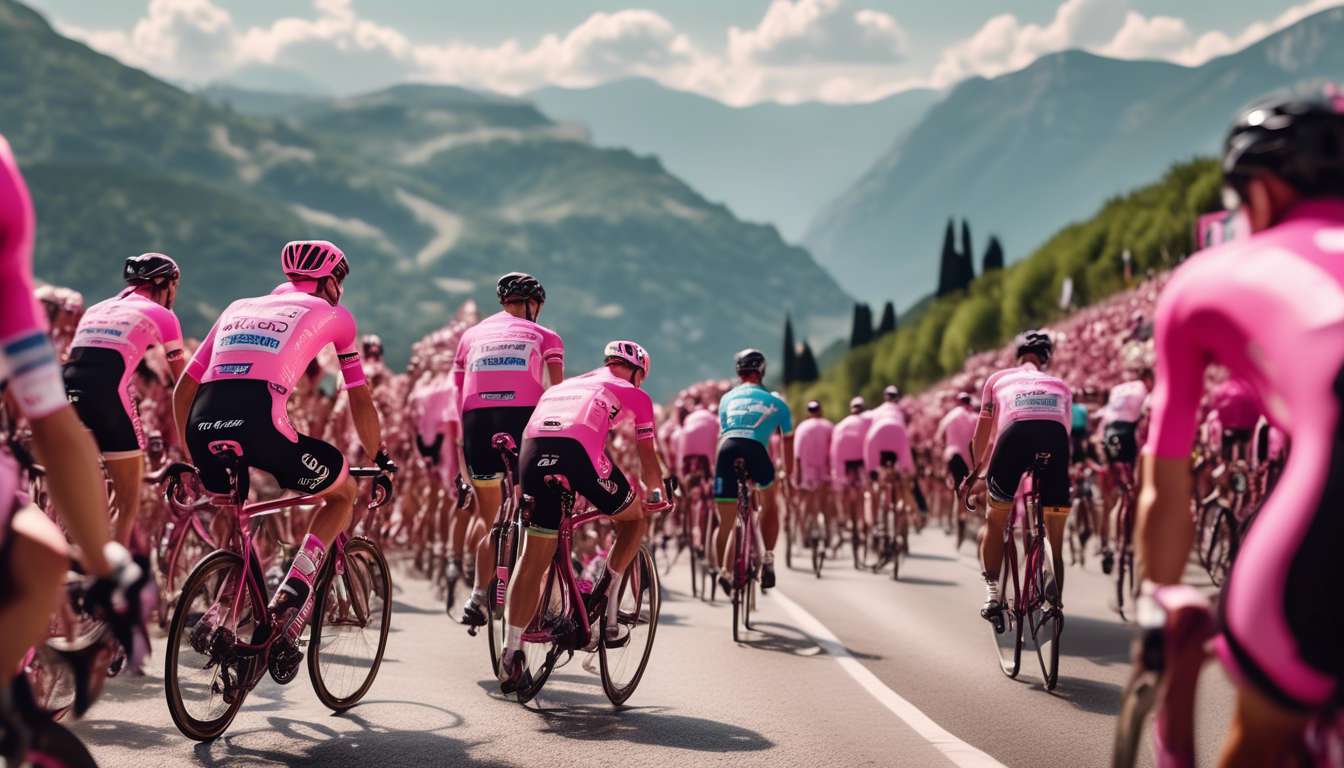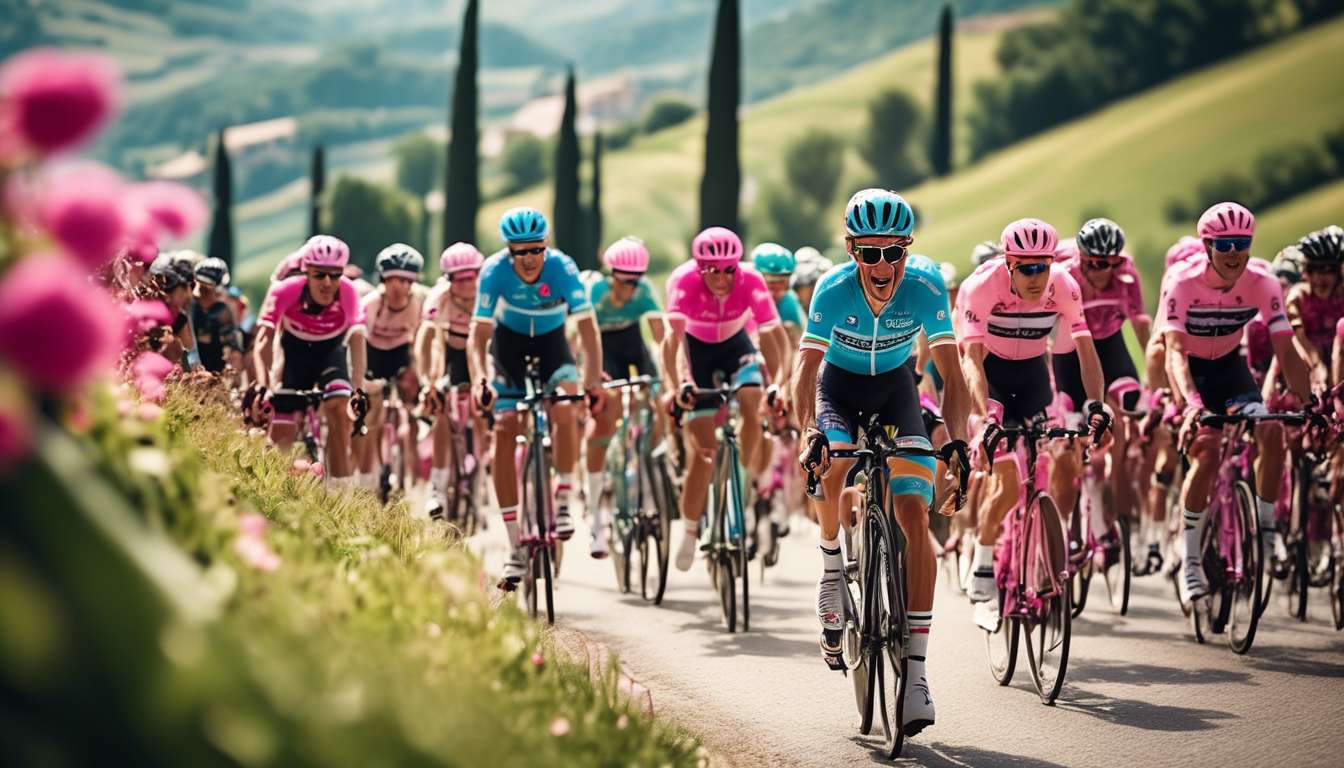As die-hard cycling fans and followers of the Tour de France, we have often pondered the impact of weather on the race’s outcomes. Each year, as we watch the peloton snake through the picturesque landscapes of France, we notice how the elements play a crucial role in shaping the race.
The Elements’ Impact:
- Sweltering heat of a summer’s day
- Relentless downpour of rain
These conditions not only impose physical challenges on the cyclists but also influence the strategic decisions that teams must make in response to ever-changing weather.
Observations:
- Certain riders thrive in harsh conditions
- Others struggle to maintain their form
This leads us to question: How significant is the influence of weather on the results of the Tour de France?
By examining past races and statistical data, we aim to uncover the extent to which Mother Nature sways the course of this iconic event.
Historical Weather Patterns at Tour de France
Over the years, we’ve observed that the Tour de France often experiences a wide range of weather conditions, from scorching heat to unexpected downpours. These weather patterns are more than just background elements; they shape the very essence of the competition and influence race tactics.
When the skies open up and rain pours down, cyclists must navigate:
- Slippery roads
- Reduced visibility
This demands quick adaptability and strategic maneuvering.
On the other hand, when the sun beats down relentlessly, different tactics come into play as cyclists work to:
- Conserve energy
- Maintain hydration
Weather is a formidable force, molding the landscape of each stage and challenging cyclists to adapt their strategies on the fly. It’s in these moments that we see the resilience and camaraderie among cyclists and fans alike.
Together, we embrace the unpredictability, knowing that each weather pattern adds a unique chapter to the Tour’s storied history.
Impact of Heat on Cyclists
Intense heat during the Tour de France demands that we meticulously manage our energy and hydration to maintain peak performance. As cyclists, we know that extreme weather conditions can significantly impact our race tactics. When temperatures rise, our bodies work harder to cool down, leading to quicker fatigue.
Strategic Energy Management:
- We must be strategic about when to push ourselves and when to conserve energy.
- It’s not just about individual endurance; it’s about teamwork and shared strategies to tackle the heat together.
Team Dynamics:
- We rely on each other to set the pace, drafting behind teammates to reduce wind resistance and conserve energy.
- Our support crew becomes even more crucial, ensuring we’re consistently hydrated and nourished.
Adapting to Weather Conditions:
- Weather conditions force us to adapt; they remind us of the camaraderie and unity among us.
- Together, we adjust our tactics to accommodate the heat, becoming stronger as a collective.
Thriving as a Cohesive Unit:
- In the end, it’s not just about enduring the race but thriving as a cohesive unit against the elements.
Effect of Rain on Speed
In the rain, we face the challenge of adjusting our pace as slick roads demand heightened caution and skill. Weather impacts everything. Our race tactics are deeply entwined with the elements. Rain transforms our approach, slowing us down and requiring more precise handling. Each pedal stroke must be calculated to maintain balance and avoid mishaps on slippery surfaces.
We find ourselves in a unique camaraderie, united by the shared adversities that rain presents. It’s not just about speed; it’s about strategic adjustments. We modify our tactics, knowing that every decision counts.
When the skies open, drafting becomes an art, requiring trust and coordination. Our collective experience and resilience shine through as we adapt to the ever-changing weather conditions.
Together, we push forward, knowing that rain is just another obstacle we’ll overcome, united in our passion for the race.
Wind’s Influence on Race Tactics
Wind plays a crucial role in shaping our race strategies, demanding constant adjustments and awareness from the entire team.
Weather conditions can significantly impact our tactics:
- Headwinds: When faced with strong headwinds, we might form echelons, working together to conserve energy and shield each other from the brunt of the gusts.
- Tailwinds: Conversely, a tailwind can provide a welcome boost, allowing us to push the pace and gain precious time.
Crosswinds require heightened vigilance and communication. In these conditions:
- Positioning becomes critical; we need to ensure that we’re in the right spot to avoid being caught off guard.
- Our team’s cohesion and coordination can make all the difference, turning a challenging weather scenario into an opportunity to gain an advantage.
Together, we navigate wind’s unpredictable nature, always ready to adjust our race tactics to optimize performance.
Snow and High Mountain Stages
Navigating high mountain stages with snow requires careful preparation and adaptability to maintain both momentum and safety. As cyclists, we understand that weather conditions like snow can significantly alter the dynamics of the Tour de France, compelling us to adjust our race tactics.
Snow-covered roads demand extra caution as they can be treacherous and slippery, affecting our grip and balance. In these challenging conditions, teamwork becomes more crucial than ever. By supporting each other, we can make strategic decisions that enhance our collective safety and performance.
When facing snow in high mountain stages, we often have to:
- Modify our pacing and energy conservation strategies.
- Stay warm and fueled, as the cold can drain our energy.
- Adapt our gear, opting for layers that provide warmth without restricting movement.
By embracing these challenges together, we create a shared experience that strengthens our camaraderie and enhances our ability to triumph over nature’s obstacles.
Psychological Factors in Extreme Conditions
In extreme conditions like snow-covered mountain stages, mental resilience becomes just as critical as physical endurance. As cyclists, we face not only the physical toll of challenging terrains but also the psychological battle that harsh weather imposes.
When the cold bites and visibility drops, our thoughts can become our greatest adversaries. We need to dig deep, relying on each other for strength and motivation. This involves reminding ourselves and our teammates of the race tactics we’ve trained for.
Weather can alter the dynamics of a race, and it’s in these moments that our mental fortitude is tested. We must:
- Stay focused.
- Adapt to the shifting conditions.
- Maintain a clear strategy.
It’s not just about who’s the strongest physically, but also who can keep a calm mind amidst chaos.
Together, we ride through the storm, using our shared determination and connection to push past the barriers that weather throws in our path. In these moments, belonging to a team becomes our greatest asset.
Strategies for Adapting to Weather
To effectively tackle unpredictable weather, we need to incorporate flexible strategies into our training regimen. As cyclists, we’re part of a community that thrives on overcoming challenges together. Let’s focus on developing race tactics that consider varying weather conditions, ensuring we’re ready for anything the Tour de France throws our way.
Practice in Diverse Conditions:
- Practice riding in rain, wind, and heat.
- Alter posture and pedaling style to maintain efficiency and safety.
- Simulate these environments during training to become more resilient and versatile.
Team Collaboration:
- Share insights and experiences within the team.
- Refine strategies based on shared knowledge, such as:
- Drafting techniques in windy scenarios.
- Adjusting nutrition and hydration plans for extreme temperatures.
By embracing these approaches, we cultivate a sense of unity and preparedness, empowering us to face any weather with confidence and camaraderie, enhancing our Tour de France experience.
Statistical Analysis of Weather Effects
Let’s dive into the data to quantify how different weather conditions have historically impacted Tour de France outcomes. Weather plays a significant role in shaping cyclists’ performance and race tactics. By analyzing historical race data, we can identify patterns where rain, wind, or heat have altered race dynamics.
Rain often leads to cautious riding, impacting overall race speed and increasing the likelihood of crashes.
Wind affects the race by:
- Causing cyclists to form tight echelons
- Encouraging strategic drafting to minimize energy expenditure
Extreme Heat can lead to:
- Dehydration and fatigue
- Riders adjusting their pacing and hydration strategies
By examining these patterns, we gain insights into how cyclists have adapted their race tactics to varying weather conditions. This understanding fosters a deeper connection to the sport, as we realize that adapting to the elements is as much a part of the race as the cycling itself.
Together, we can appreciate the resilience and strategy required to triumph in the Tour de France.
How do different weather conditions affect the audience and spectators at the Tour de France?
Weather conditions greatly impact the atmosphere of the Tour de France, influencing our experience as audience members and spectators. From scorching heat to pouring rain, each weather pattern adds a layer of excitement and challenge to the race.
The weather can dictate several factors for spectators:
- How we dress
- Where we stand
- How we cheer on our favorite cyclists
Our reactions and interactions are deeply intertwined with the ever-changing weather conditions of this prestigious event.
What are some of the most memorable weather-related incidents in Tour de France history?
Some of the most memorable weather-related incidents in Tour de France history include:
-
Brutal Heatwaves: These intense conditions have pushed riders to their limits, requiring them to manage hydration and energy levels carefully.
-
Unexpected Snowstorms: These rare weather events can dramatically alter race conditions, forcing cyclists to adapt to slippery and cold environments.
-
Fierce Winds: Strong winds can significantly impact race dynamics, affecting cyclists’ speed and strategy.
The impact of these extreme conditions includes:
-
Unpredictability: Weather adds an element of surprise, making the race more exciting and challenging for both riders and spectators.
-
Testing Resilience and Adaptability: Cyclists must demonstrate endurance and quick thinking to navigate through adverse weather.
-
Enhancing the Race’s Legacy: Such incidents contribute to the rich tapestry of the Tour de France, highlighting the grit and determination of the participants.
Despite these challenges, the weather-related incidents have become integral to the Tour de France’s storied history, captivating audiences and showcasing the fortitude of the athletes.
How do weather forecasts influence the media coverage and broadcasting of the Tour de France?
Weather forecasts are pivotal in influencing media coverage of the Tour de France. They shape the narrative by adding an element of unpredictability and impacting race strategies.
Key roles of weather forecasts in media coverage include:
- Enhancing the viewer experience by keeping audiences engaged with unexpected changes in weather.
- Providing real-time updates and analysis to offer a comprehensive perspective on the race.
Broadcaster strategies:
-
Integration of Weather Information: Broadcasters incorporate weather forecasts into their coverage to provide in-depth insights.
-
Real-time Updates: Media outlets stay on top of meteorological predictions to deliver timely information.
By closely following these forecasts, the media enriches the storytelling around the Tour de France, making it more dynamic and informative for viewers.
Conclusion
In conclusion, weather undeniably plays a crucial role in Tour de France outcomes.
From scorching heat challenging cyclists’ endurance to rain affecting speed and wind altering race tactics, each element has a significant impact. Even psychological factors come into play in extreme conditions.
Understanding historical weather patterns and implementing strategic adaptations are key to navigating the unpredictable elements and maximizing performance in this prestigious cycling event.




